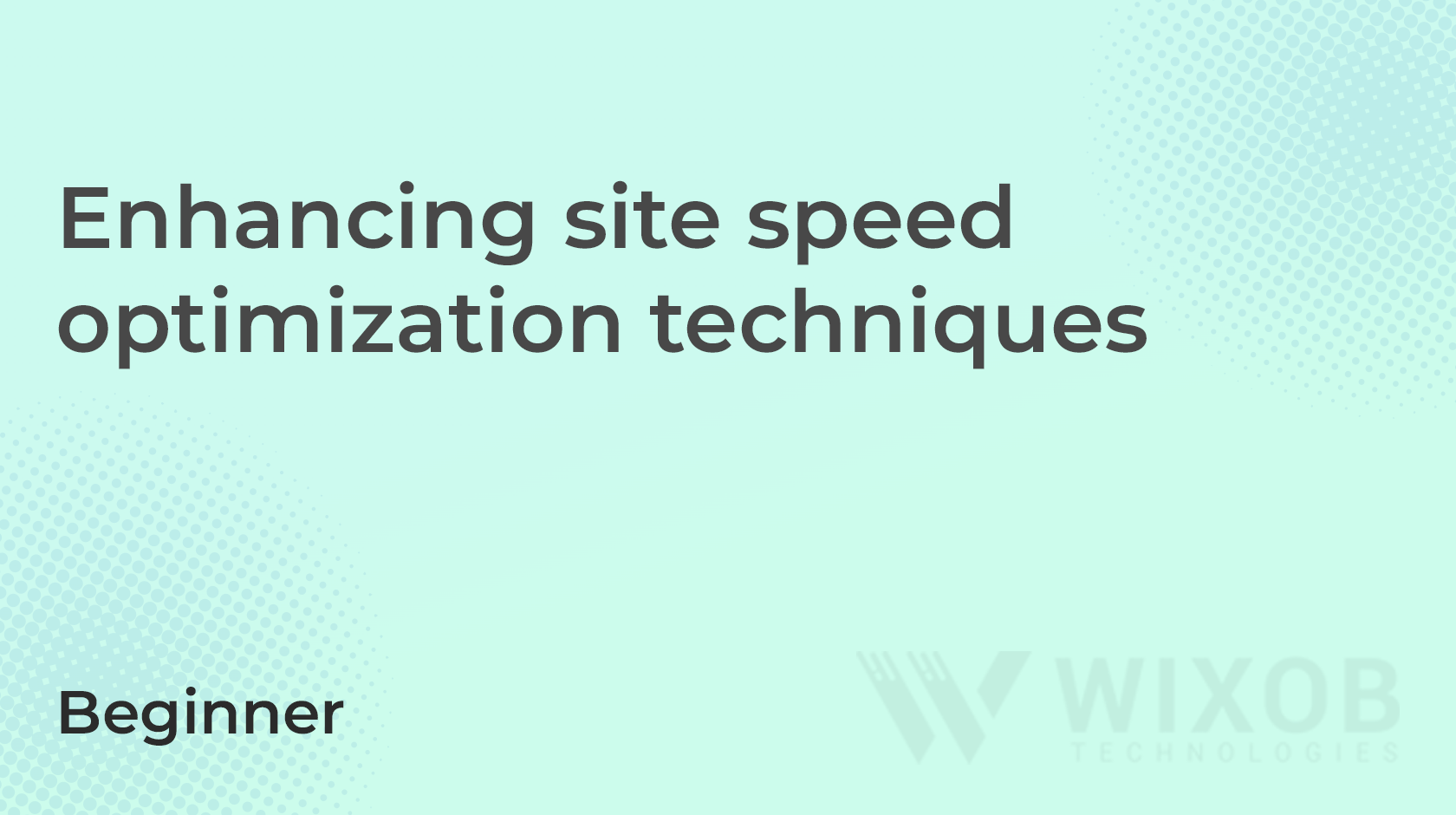In the fast-paced world of e-commerce, site speed plays a crucial role in determining the success of your Shopify store. A slow-loading website can lead to higher bounce rates, decreased conversions, and a negative impact on user experience. However, by implementing effective site speed optimization techniques, you can ensure that your Shopify store loads quickly and efficiently, providing a seamless browsing experience for your customers. In this comprehensive guide, we’ll explore advanced site speed optimization techniques and learn how to implement them using theme code customization in Shopify.
Chapter 1: Understanding the Importance of Site Speed Optimization
Before diving into the technical details, let’s discuss why site speed optimization is essential for your Shopify store. A fast-loading website not only improves user experience but also contributes to higher search engine rankings, increased conversions, and overall customer satisfaction. By prioritizing site speed optimization, you can gain a competitive edge in the e-commerce landscape and drive sustainable growth for your business.
Chapter 2: Assessing Site Speed Optimization Requirements
The first step in enhancing site speed optimization is to assess your specific requirements and objectives. Conduct a comprehensive performance audit of your Shopify store using tools like Google PageSpeed Insights or GTmetrix to identify areas for improvement. Analyze factors such as page load times, server response times, render-blocking resources, and overall page weight to pinpoint performance bottlenecks and prioritize optimization efforts.
Chapter 3: Implementing Advanced Optimization Techniques
With a clear understanding of your site speed optimization requirements, it’s time to implement advanced optimization techniques to boost the performance of your Shopify store. We’ll explore a range of optimization strategies, including:
- Minification and concatenation of CSS and JavaScript files to reduce file size and improve load times.
- Lazy loading of images and videos to defer the loading of non-essential media until they are visible in the viewport.
- Asynchronous loading of JavaScript resources to prevent render-blocking and speed up page rendering.
- Implementing browser caching and leveraging content delivery networks (CDNs) to reduce server response times and improve overall site speed.
- Optimizing theme code, including HTML, CSS, JavaScript, and Liquid, for efficiency and performance.
Chapter 4: Coding Advanced Optimization Techniques in Shopify Theme
Once you’ve identified the optimization techniques you want to implement, it’s time to code them into your Shopify theme using theme code customization techniques. We’ll provide step-by-step instructions and example code snippets for implementing each optimization strategy within your theme files. By optimizing your theme code, you can ensure that your Shopify store loads quickly and efficiently across all devices and browsers.
{% comment %}
Example Liquid code for optimizing Shopify theme for site speed
{% endcomment %}
{% layout none %}
<!DOCTYPE html>
<html lang="{{ shop.locale }}">
<head>
<meta charset="utf-8">
<title>{{ page_title }}</title>
<meta name="viewport" content="width=device-width, initial-scale=1">
<link rel="stylesheet" href="{{ 'theme.css' | asset_url }}" media="all">
{{ content_for_header }}
</head>
<body>
{{ content_for_layout }}
<script src="{{ 'theme.js' | asset_url }}" defer></script>
</body>
</html>// Example JavaScript for lazy loading images
document.addEventListener('DOMContentLoaded', function() {
const images = document.querySelectorAll('img[data-src]');
images.forEach(function(img) {
img.setAttribute('src', img.getAttribute('data-src'));
img.onload = function() {
img.removeAttribute('data-src');
};
});
});Chapter 5: Testing and Optimization
After implementing advanced optimization techniques, it’s essential to thoroughly test the performance of your Shopify store and optimize further as needed. Conduct regular performance audits using tools like Google PageSpeed Insights and monitor key performance metrics to track improvements over time. Test your store across different devices, network conditions, and browsers to ensure consistent and optimal performance for all users.
Chapter 6: Conclusion
Enhancing site speed optimization in your Shopify store is a continuous process that requires proactive monitoring and optimization efforts. By implementing advanced optimization techniques and optimizing your theme code, you can significantly improve the performance of your store and provide a seamless browsing experience for your customers. With the guidance provided in this guide, you’ll be well-equipped to boost site speed and drive success for your Shopify store in the competitive e-commerce landscape.

Leave a Reply